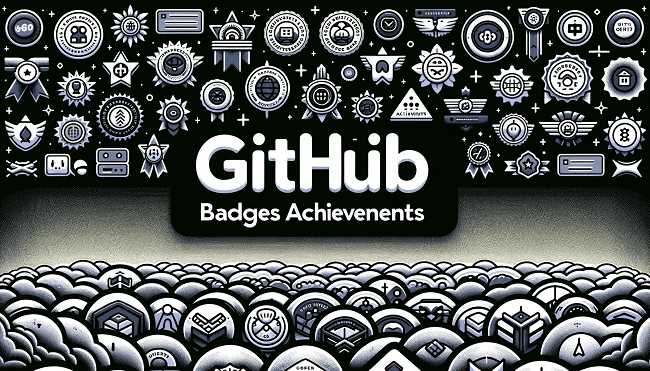GitHub Profile Crack Download Free Generator on Windows & PCs
Download Free generator GitHub Profile Crack
GitHub Profile Crack is a feature of GitHub that allows users to use a Markdown file named README to write details about themselves, such as their skills, interests, and GitHub statistics, and showcase it to the GitHub community. It appears at the top of the GitHub home page, above the pinned repositories. This is a great way to show off your skills and stats on GitHub.
Next, we will add social network badges. After clicking on the badge, you will be redirected to the relevant social network pages. You can add social badges on different sites like Instagram, Facebook, Twitter, etc. For this tutorial, we will add three: Twitter, YouTube and LinkedIn.

Overview:
To get the respective badges for each social network, we will use Shields.io, which provides various endpoints that allow users to create and customize social badges.
If you’re looking for some inspiration or information on how to enable this on your profile, here are a few Read However, Mes jumped out at me over the past few weeks. Everything from purely cosmetic and informational to truly spectacular, computationally impressive, and entertaining artwork.
Screenshots:


GitHub Profile Crack Key Properties:
- Choose or create a GIF Find a GIF that represents you or your work. It can be a cool coding-related animation, a snippet of your projects, or anything that adds personality to your profile.
- Use the following HTML snippet to insert a GIF into your README profile.
- Replace the attribute with the URL of your chosen GIF.
- This step creates an eye-catching header with the selected GIF in the middle
- A GitHub profile page makes it more engaging and visually appealing to visitors.
- However, remember to make sure the size and content of your GIF are appropriate and professional for your GitHub profile.
- Create a section about yourself, detailing your role, expertise, and a bit about your interests.
- Use badges to link to your LinkedIn, portfolio, or other professional sites.
- Add a snake animation with GitHub posts to visualize your daily activity.
- Show the languages you speak with badges.
- Refine your knowledge of cloud technologies with relevant badges
- Show the frameworks you control.
- Express your skills in an immersive technology space with a dedicated section for 3D modeling, virtual reality, and augmented reality.
- Equally important, including this section will highlight your ability to work with cutting-edge technology and create immersive digital experiences that showcase a dynamic range of skills beyond traditional programming.
- Further, remember to replace placeholders and add or remove badges based on your specific skills and experience.
- Include GitHub statistics to get an overview of your activity and contributions.
- Visit regularly and update your profile as you gain new skills, complete more projects, or want to refresh your look and content.
What’s the new GitHub Profile Crack?
- More ways how to create a GitHub Profile
- Adding social badges, skills, and descriptions about yourself
- Furthermore, adding GitHub statistics
- Creating a GitHub workflow for downloading the latest published blogs
System requirements:
- OS: Windows 10, 7, 8, or 11 (64-bit)
- Memory: two gigabytes or more
- Storage: 100 MB of free storage space are available.
- Internet: Internet access is necessary for repository cloning and initial setup.
How to use the GitHub Profile Crack:
- Firstly, the Create New Repository page opens. In the Repository Name field, enter the username of your GitHub account.
- After entering your username, GitHub will display a message describing that you are about to create a special GitHub repository.
- Check the Public box under the repository type to make the GitHub README profile visible to anyone who visits the GitHub profile page.
- If you don’t want users to see your GitHub README profile while it’s still under development, you can choose Private.
- When you are done with the complete development of the README file, don’t forget to change the visibility to public.
- Then, check the Add README file check box.
- This will add a README.md file to which we will add the profile content.
- So, the field values should look similar to the image below.
- Click the Create However, Repository button.
- A special repository has been successfully created. Go to the repository However, you just created it, and you will see the README.ms file added to the repository.
- In the next few sections, However, we’ll add content to our README.md file. We’ll use the GitHub file
- editor to commit and preview changes.
- You can use any other text editor you like.
- To use the GitHub file editor, open the README.md file and click the Edit this file icon (pencil icon) in the upper right corner of the page. You can read more about editing GitHub.
Conclusion: GitHub Profile Crack:
Consequently, your GitHub profile is the home page of your coding journey. However, using these steps and snippets, you can turn it into a dynamic, informative, and attractive space that effectively showcases your skills, projects, and personality.
My full GitHub profile code
To sum up, below is the complete source code for creating a dynamic and engaging GitHub profile. This comprehensive code contains all the snippets and sections described earlier. Furthermore, it allows you to replicate or customize the profile settings for your use. Be sure to replace the placeholders with your information and equally important you can add or remove sections as your profile needs. My GitHub